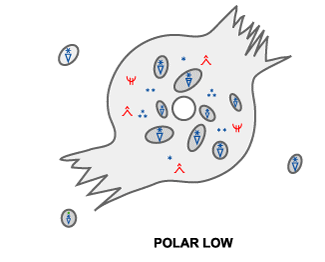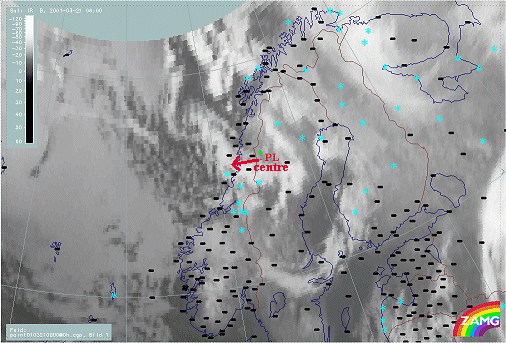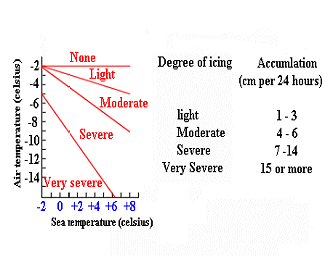POLAR LOW - WEATHER EVENTS
by KNMI
Some Polar Lows show a small-scale baroclinic zone resulting in a more frontal type of precipitation. These Polar Lows will shift farther inland producing hazardous weather conditions with heavy snowfall and strong wind gusts.
| Parameter | Description |
| Precipitation |
In developing phase: widespread light to moderated showers
In mature phase: heavy (snow) showers in most cases |
| Temperature | Around freezing point but in centre slightly warmer. Strong decrease in temperature directly after passage of the centre. |
| Wind | Mean wind > 27 kts/14 m/s or >=7 bft. Strong windgusts. Max wind occurs where relative motion of the Polar Low is in same direction as the wind direction. |
| Other relevant information | Thunderstoms or even small tornadoes are possible.
The heaviest showers are located close to the centre. Occasionally these showers are thunderstorms with strong wind gusts. Even some small tornadoes are observed. High risk of icing over sea. Blizzard conditions over land. |
|
21 March 2001/06.00 UTC - Meteosat IR image; Weather events in a Polar Low near the west coast of Norway
|
|

|

|
Icing on ships
Normally Polar Lows reach their mature stage over sea. Therefore ships have to be aware of the hazardous weather conditions. One of the risks small boats have to be aware of is icing. Because of the strong winds and the low air temperature, spray may freeze on the superstructure of a boat. The weight of accumulated ice may eventually become a considerable hazard.The degree of icing depends both on temperature and wind speed, as shown in the figure below.
Degree of icing with a wind of 8-9 bft. (> 41 kt./21 m/s)



